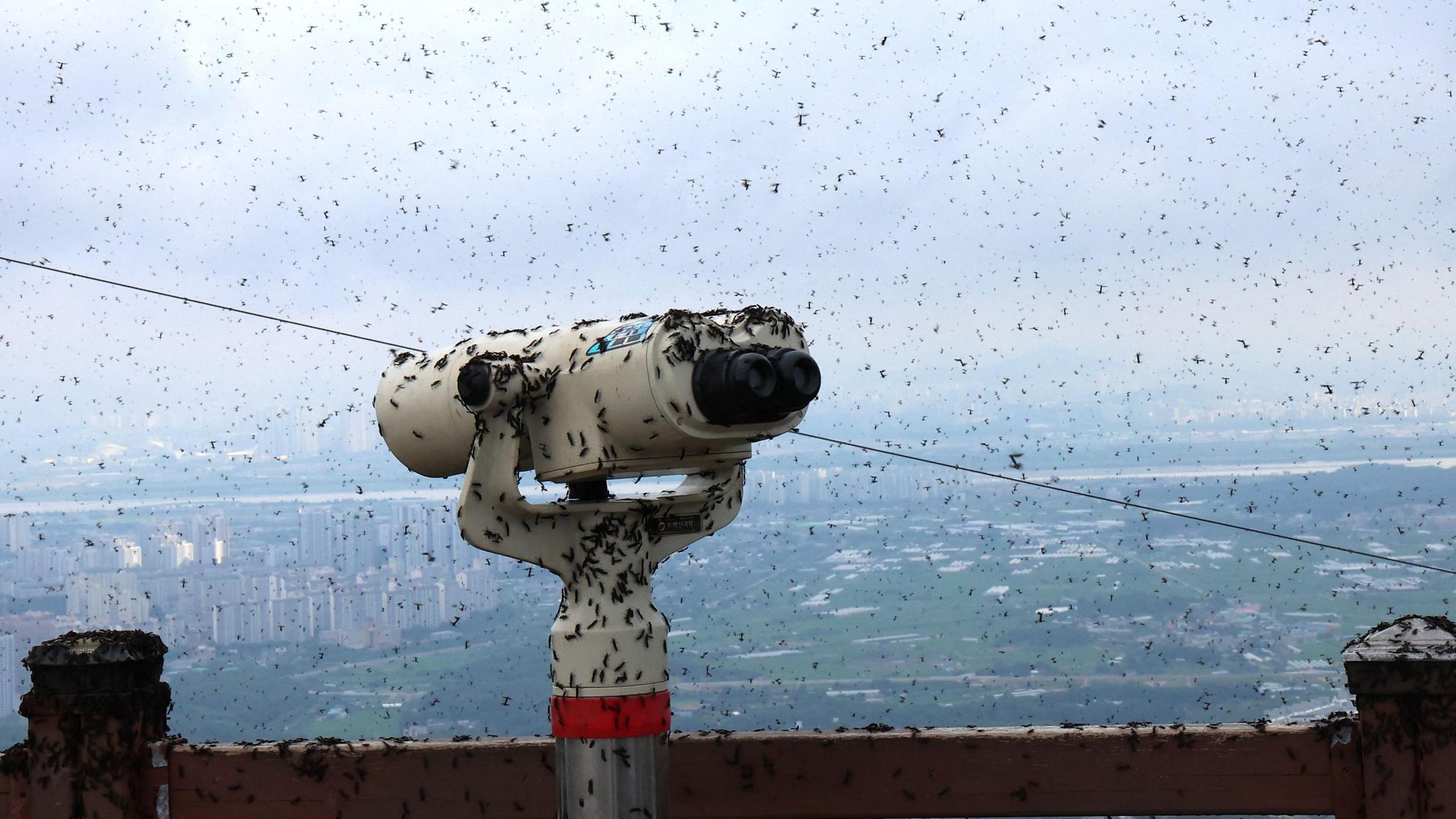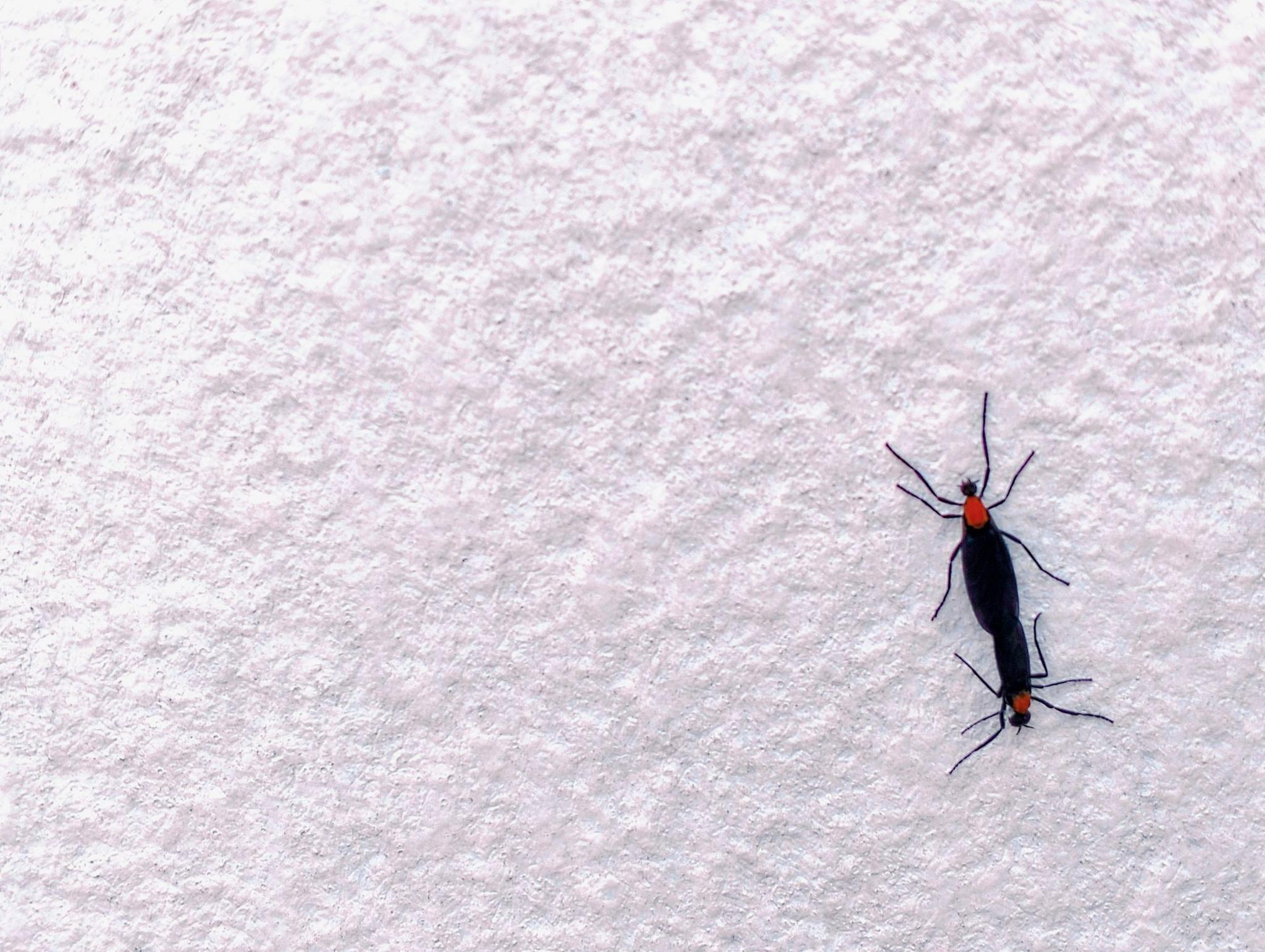Areas of South Korea turned black with huge swarm of 'lovebugs'
Watch: Millions of 'lovebugs' swarm hikers in South Korea
- Published
People in Seoul, the capital of South Korea, are dealing with a big bug problem.
Strange black insects nicknamed lovebugs have shown up all over the city - especially in parks and hiking areas.
Some paths are completely covered in them.
Videos online show places like Gyeyangsan Mountain where areas have turned completely black because of how many bugs there are.
Have you seen any flying ants?
- Published26 June
WATCH: Mayflies swarm petrol station. Video, 00:00:46
- Published30 May 2018
The insect's official name is Plecia longiforceps.
They're known as lovebugs because they fly around stuck together in pairs as if they're having a big lovebug hug.
The male bugs only live for three to four days, and the females about a week, which they spend laying hundreds of eggs in damp soil.

A telescope at the summit observatory of a mountain is covered with lovebugs in Incheon, South Korea
Although they might look a bit gross, lovebugs actually help nature.
Seoul authorities said in public announcements: "They have a disgusting appearance but are actually beneficial insects."
They pollinate flowers, and their young (known as larvae) help make soil healthier by breaking down old plants and leaves.
City officials say they don't want to spray them with harsh chemicals, as it could also be harmful for other insects.
Instead, people are being asked to use water sprays to wash them away, put sticky pads near lights, and wear dark clothes outside. That's because lovebugs are attracted to bright lights and colours.
Still, many people have had enough. A recent survey found that most Seoul residents think lovebugs are pests.
In fact, in a survey they were voted the third most annoying insect in the city — after cockroaches and bedbugs.

The lovebugs themselves are completely harmless to humans and do not bite, feasting on plants instead.
Originally from subtropical regions (warm, hot areas with high humidity) of south-eastern China, Taiwan and Japan's Ryukyu Islands, the lovebugs were first identified in South Korea during a major outbreak in 2022.
But they never stick around for long, and their appearance will be short lived - literally.
They usually disappear by the middle of July, because they only live for a short time.
